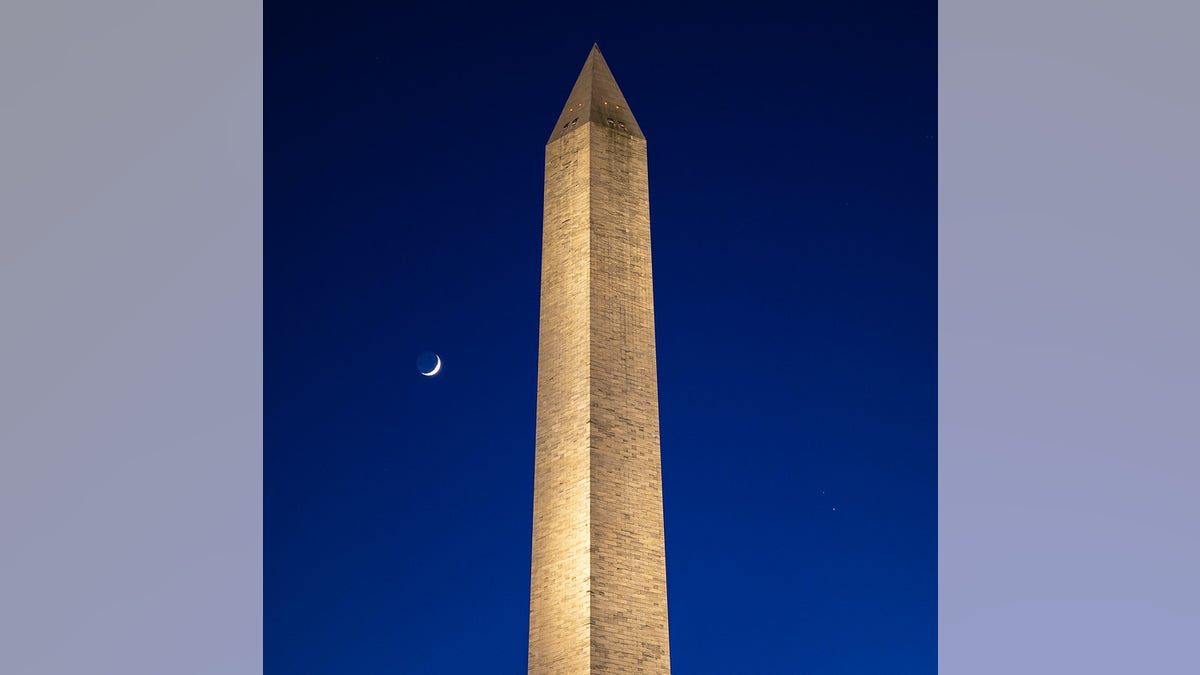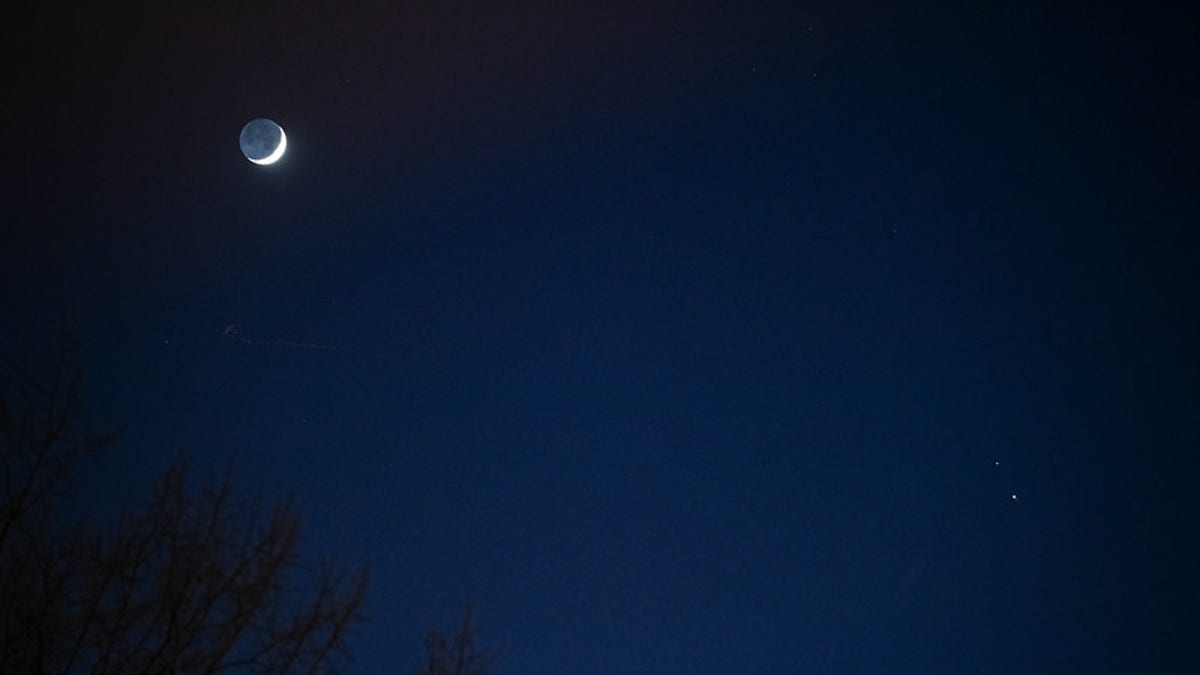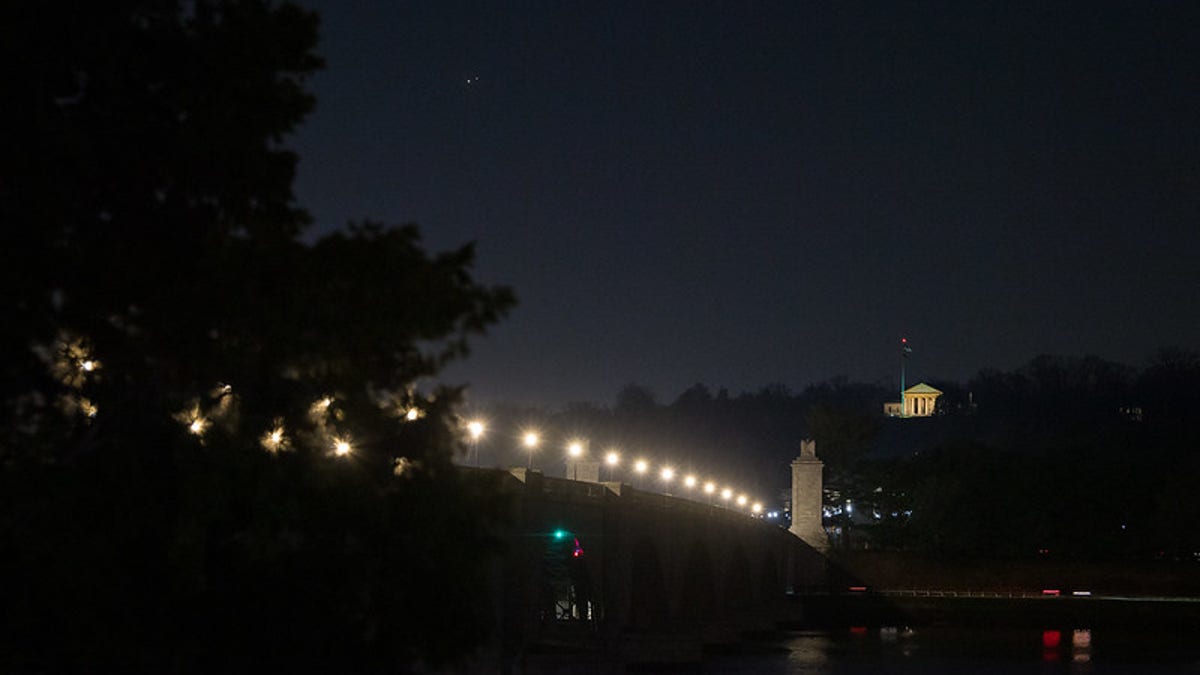Fox News Flash top headlines for December 22
Fox News Flash top headlines are here. Check out what's clicking on Foxnews.com.
NASA has released a slew of pictures of the "Christmas star," a celestial event where the two largest planets in the solar system, Jupiter and Saturn, form what looks like a double planet.
The event started after sunset on Dec. 21, 2020, the beginning of the winter solstice. Though this event happens roughly once every 20 years, astronomers have to go back to the Middle Ages to find an event where the two gas giants were in such close alignment, Rice University astronomer Patrick Hartigan said in a statement.

upiter, left, and Saturn, right, are seen during the "great conjunction" where the two planets appear a tenth of a degree apart from one another, Monday, Dec. 21, 2020, near Chapel Hill, North Carolina. Photo Credit: (NASA/Bill Ingalls)
"Alignments between these two planets are rather rare, occurring once every 20 years or so, but this conjunction is exceptionally rare because of how close the planets will appear to one another," said Rice Hartigan said. "You’d have to go all the way back to just before dawn on March 4, 1226, to see a closer alignment between these objects visible in the night sky."

The Moon, left, Saturn, upper right, and Jupiter, lower right, are seen after sunset with the Washington Monument, Thurs. Dec. 17, 2020, in Washington. The two planets are drawing closer to each other in the sky as they head towards a "great conjunction" on December 21, where the two giant planets will appear a tenth of a degree apart. Photo Credit: (NASA/Bill Ingalls)
CHRISTMAS STAR IS COMING: JUPITER AND SATURN ARE ABOUT TO DO SOMETHING NOT SEEN FOR NEARLY 800 YEARS
Between Dec. 16 and Dec. 25, the two planets will be separated by less than a full moon, Hartigan added.

Saturn, top, and Jupiter, below, are seen after sunset from Shenandoah National Park, Sunday, Dec. 13, 2020, in Luray, Virginia. The two planets are drawing closer to each other in the sky as they head towards a "great conjunction" on December 21, where the two giant planets will appear a tenth of a degree apart. Photo Credit: (NASA/Bill Ingalls)
"On the evening of closest approach, on Dec. 21, they will look like a double planet, separated by only fifth the diameter of the full moon," Hartigan explained. "For most telescope viewers, each planet and several of their largest moons will be visible in the same field of view that evening."
The nativity star may also have been a rare celestial alignment, with Jupiter, Venus and a star known as Regulus all aligning around 2 B.C., Justin Mason, a director of Old Dominion University's Pretlow Planetarium, told The Virginian-Pilot.

The Moon, left, Saturn, upper right, and Jupiter, lower right, are seen after sunset from Washington, DC, Thurs. Dec. 17, 2020. The two planets are drawing closer to each other in the sky as they head towards a "great conjunction" on December 21, where the two giant planets will appear a tenth of a degree apart. Photo Credit: (NASA/Aubrey Gemignani)
The celestial event that has been dubbed the Christmas Star, or Star of Bethlehem, can be observed anywhere on Earth, but Hartigan noted the farther north someone is, "the less time they have to catch a glimpse."
Franck Marchis, senior planetary astronomer at the SETI Institute and Chief Scientific Officer at Unistellar, told Fox News this is a celestial event "you don't want to miss."

Jupiter, left, and Saturn, right, are seen during the "great conjunction" where the two planets appear a tenth of a degree apart from one another, Monday, Dec. 21, 2020, from Washington, DC. Photo Credit: (NASA/Aubrey Gemignani)
CLICK HERE TO GET THE FOX NEWS APP
Stargazers should try to see the event this month or risk waiting a long time for the next occurrence. The two planets won't be this close to each other again until March 15, 2080, and sometime after the year 2400, Hartigan said.
A version of this story was originally published on Dec. 21. It has been updated to include additional information.





















